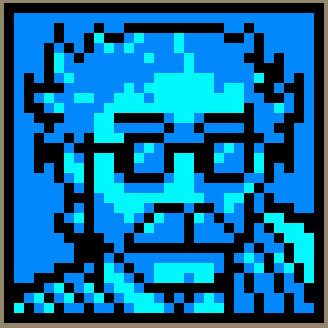
Vaporware No Longer – The Resurrection of an Unreleased Classic!
Jan 25, 2010 // Shana
Â
Read on for more on our fierce battle to resurrect an unreleased classic.

The History of Dark Voidâ„¢ Zero – Part 2
Just as things were looking hopeless, the break in the case: Jimmy Fallon not only had a ROM of the game, but he also knew the game inside and out – having avidly played it when he was thirteen.
 Flights were booked for
Flights were booked for
Back in
When the team arrived, the first thing they did was to test the game in the classic NES™, as well as a more modern NES™ top-loader, and then finally a modified PlayChoice-10 rig. In all cases, the game didn‒t work. Blowing on the cartridge didn‒t result in a fix despite all hope that it would. The connector was cleaned several times, and ultimately, the cartridge was simply not going to run on the hardware.
 Even though the cartridge didn‒t work, there was a chance it still contained the code needed to run the game. It was likely corrupt and we‒d have to repair the code by making educated guesses on what belonged to what areas of ROM to initiate the game. After the ROM itself was “slurped,†a process that “reads†the data on the EEPROMS into a PC, the engineers were able to read the game code and try to simulate its process to isolate the problems with the game.
Even though the cartridge didn‒t work, there was a chance it still contained the code needed to run the game. It was likely corrupt and we‒d have to repair the code by making educated guesses on what belonged to what areas of ROM to initiate the game. After the ROM itself was “slurped,†a process that “reads†the data on the EEPROMS into a PC, the engineers were able to read the game code and try to simulate its process to isolate the problems with the game.
The first thing we noticed was that the code launched fine, but would immediately jump to a section of code that was “corrupt†and get stuck in a loop. Imagine a series of dominoes set up to fall over one another in succession in a straight line, and the dominos in the middle were removed. That is the easiest way to explain what was wrong with the
BINGO.
It worked! The title sequence was a bit funky, but it was likely due to the fact that the garbled code initiated some variables that confused the startup sequence. The game worked with the custom emulator built by Capcom to simulate the NESâ„¢ as well as the Zero chipset.

What did we have? We had one complete first level, a partially complete second level, and a barely complete third level. The third level was comprised of moving boxes and reference artwork meant to distinguish types of collision and enemies within the game world. We had some rough musical compositions that were accessible only in a debug menu. It wasn‒t a complete ROM, but it was the closest thing we‒d ever find that remained of the game.
We‒d have to disassemble the ROM, understand all of the inner-workings of the game logic, and fill in all of the gaps based on notes, design scribbles, and memories. In other words, we had a HUGE mountain to climb.
And only four months to do it all!
-
Brands:Tags:
-

Loading...
Platforms:
